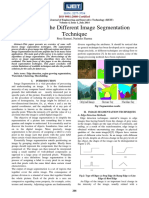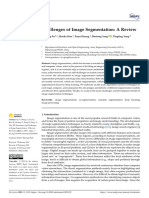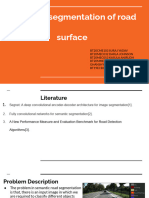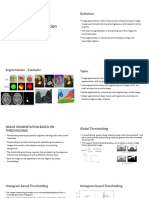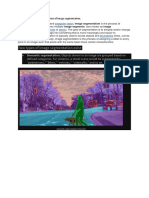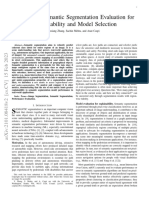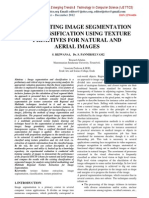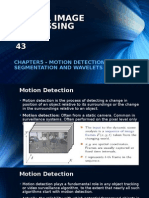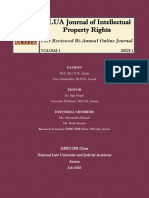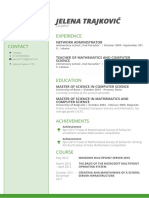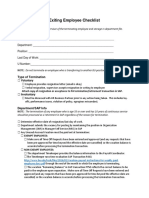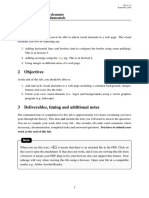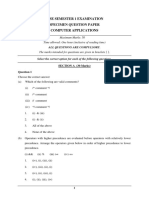0% found this document useful (0 votes)
21 views6 pagesImage Segmentation Final
The document discusses image segmentation in computer vision, detailing its importance in analyzing images by breaking them into meaningful segments for various applications such as medical imaging and autonomous vehicles. It outlines different approaches to segmentation, including region-based and edge-based techniques, and describes three main types: semantic, instance, and panoptic segmentation. Additionally, it highlights the challenges faced in achieving accurate segmentation due to factors like object diversity and image quality issues.
Uploaded by
bisratboge21Copyright
© © All Rights Reserved
We take content rights seriously. If you suspect this is your content, claim it here.
Available Formats
Download as PDF, TXT or read online on Scribd
0% found this document useful (0 votes)
21 views6 pagesImage Segmentation Final
The document discusses image segmentation in computer vision, detailing its importance in analyzing images by breaking them into meaningful segments for various applications such as medical imaging and autonomous vehicles. It outlines different approaches to segmentation, including region-based and edge-based techniques, and describes three main types: semantic, instance, and panoptic segmentation. Additionally, it highlights the challenges faced in achieving accurate segmentation due to factors like object diversity and image quality issues.
Uploaded by
bisratboge21Copyright
© © All Rights Reserved
We take content rights seriously. If you suspect this is your content, claim it here.
Available Formats
Download as PDF, TXT or read online on Scribd
/ 6









